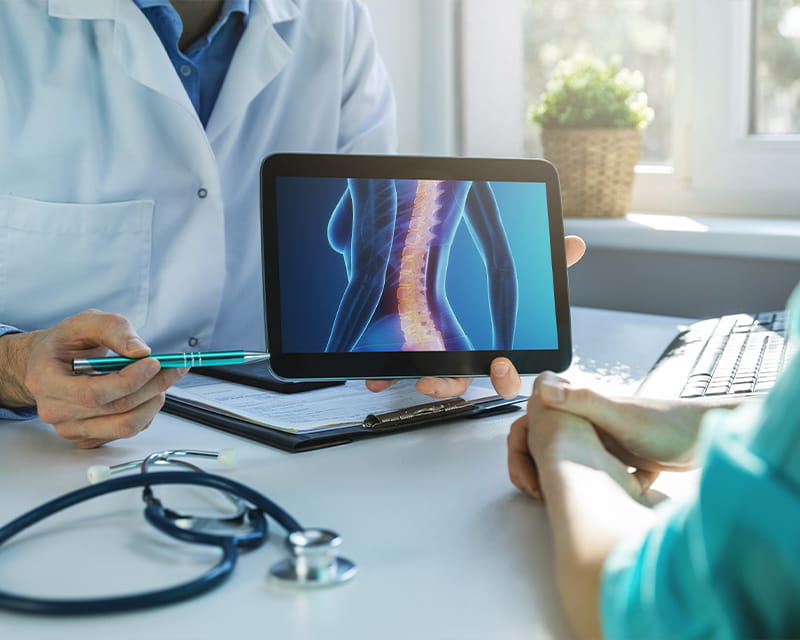
Novel research explores neurobiological mechanisms driving sarcopenia in aging
 Although back pain is one of the most disabling conditions worldwide, there remains no consistent method to quantify its biopsychosocial impact to help pinpoint the most appropriate treatment. Researchers at The Ohio State University Wexner Medical Center are working to change that.
Although back pain is one of the most disabling conditions worldwide, there remains no consistent method to quantify its biopsychosocial impact to help pinpoint the most appropriate treatment. Researchers at The Ohio State University Wexner Medical Center are working to change that.
“When you look at other medical conditions, we have proven measurements to help physicians select effective therapies by individual—for example, blood tests to measure lipids with heart disease or A1C for diabetes,” explains William Marras, PhD, CPE. “Having concrete numbers based on standardized norms also makes it easier to monitor progress throughout treatment and make any necessary adjustments.”
Dr. Marras, who serves as both director of the Spine Research Institute and Honda Chair in the Department of Integrated Systems Engineering at The Ohio State University, also notes that, “with back pain, we are limited to disjointed input that relies heavily on a patient’s individual perception of his or her condition and personal pain tolerance.”
Dr. Marras also holds joint academic appointments in the Department of Neurosurgery, the Department of Orthopaedic Surgery and the Department of Physical Medicine and Rehabilitation.
To support the development of a workable phenotype for back pain, Dr. Marras has joined a team of Ohio State Wexner Medical Center neurologists, neurosurgeons, engineers and other experts to participate in BacPac, the Back Pain Consortium Research Program, funded by the National Institutes of health, and similar research initiatives funded by the Department of Defense and the Ohio Bureau of Workers’ Compensation.
“Ohio State serves as a tech site, so our role is to create the technology needed to collect and evaluate patient data across different dimensions. The platform we develop will ultimately synthesize large amounts of physical, psychological and biomechanical modeling information to generate one scale that can be used to more definitively assess a patient’s back pain against ‘the norm,’” Dr. Marras says.
Input data will include the results from wearable technology, which consists of a harness that attaches to a patient’s chest and pelvis to measure movement quickly and easily in just 10 minutes. The resulting data provides an understanding of how a patient moves, and this physical data will be supplemented with information from electronic medical records, imaging and biomechanical modeling to provide a comprehensive picture of how back pain may be affected by different issues related to neurology, skeletal structure, muscles or other health conditions.
Because depression, anxiety and other psychological and lifestyle issues can also influence or be compounded by back pain, the technology platform will also incorporate data from patient questionnaires. Although there are several different questionnaire formats commonly used with back pain patients, all are intended to quantify the perceived pain and related mental and social concerns.
The platform in development has already been granted Breakthrough Device status by the FDA, a designation that is rarely granted but provides streamlined communication and accelerated approval processes.
“Because our research has been identified as both novel and a potential solution for an important problem, the FDA will work in close partnership with us throughout the project, which is incredibly advantageous,” Dr. Marras explains.
The Ohio State Wexner Medical Center is in its second year of data collection with plans to accelerate the pace of input starting in 2022. By the end of this five-year effort, the intention is to have over 100,000 patient files added to the database to further strengthen the algorithm.
Because the data lives in the digital cloud, there really is no limitation. “Right now, our focus is on patient recruitment and software development to make the platform easy to use and understand,” Dr. Marras says. “The more data points, the better, so we’re relying heavily on physicians at Ohio State and the other participating health care centers to encourage participation.
“Far too many patients have had to suffer for months or years with chronic back pain, just languishing without effective treatment,” he says. “We believe this tool can be a game changer—having a standardized evaluation metric that addresses the brain/body connections can transform how we assess, treat and manage all aspects of back pain in the future.”